Quarantine Enclosures for Poison Frogs: Two Methods
Whether it’s a new acquisition or a specimen suspected of having an ailment, quarantining poison frogs in an enclosure away from your collection is important to mitigate the potential risk of diseases spreading throughout your collection. These are the simple steps you can take to create a suitable temporary habitat for your new or potentially ill specimens. Chytrid, internal parasites, bacterial infections, and other ailments can rapidly spread through an established collection if questionable specimens are not put through a quarantine period of 3-4 months. Trust me, I’m as impatient as one can get, but I just don’t want to risk losing my collection by not quarantining new or ill specimens.
There are a couple of quarantine enclosure methods that I will discuss in this tutorial. One method involves using a drainage layer and typical vivarium/terrarium substrate. The other method incorporates a foam filter mat. Both methods work well. I like to add cuttings to my quarantine enclosures so the frogs feel secure, and I can establish more plants. You can certainly put cuttings in the enclosure with the foam filter mat, but you’ll probably want to stick with plants that are epiphytic or hemiepiphytic. Foam filter mats are easy to clean and can be reused if cleaned thoroughly.
Supplies:
Ezy Storage 50L/52.8 Quart Waterproof Clear Latch Tote IP-67
Fine mesh aluminum screen (used as an air vent for enclosure and substrate barrier)
Aquarium safe silicone
Wood burning tool
Hot glue gun and glue sticks
Drill with hole saw bit
LECA or foam filter mat
Peat moss
Sphagnum moss (milled)
Horticultural charcoal
Fir bark
Hardscape - cork bark, branches, etc. (optional)
Magnolia and/or live oak leaves
Plant cuttings
LED light
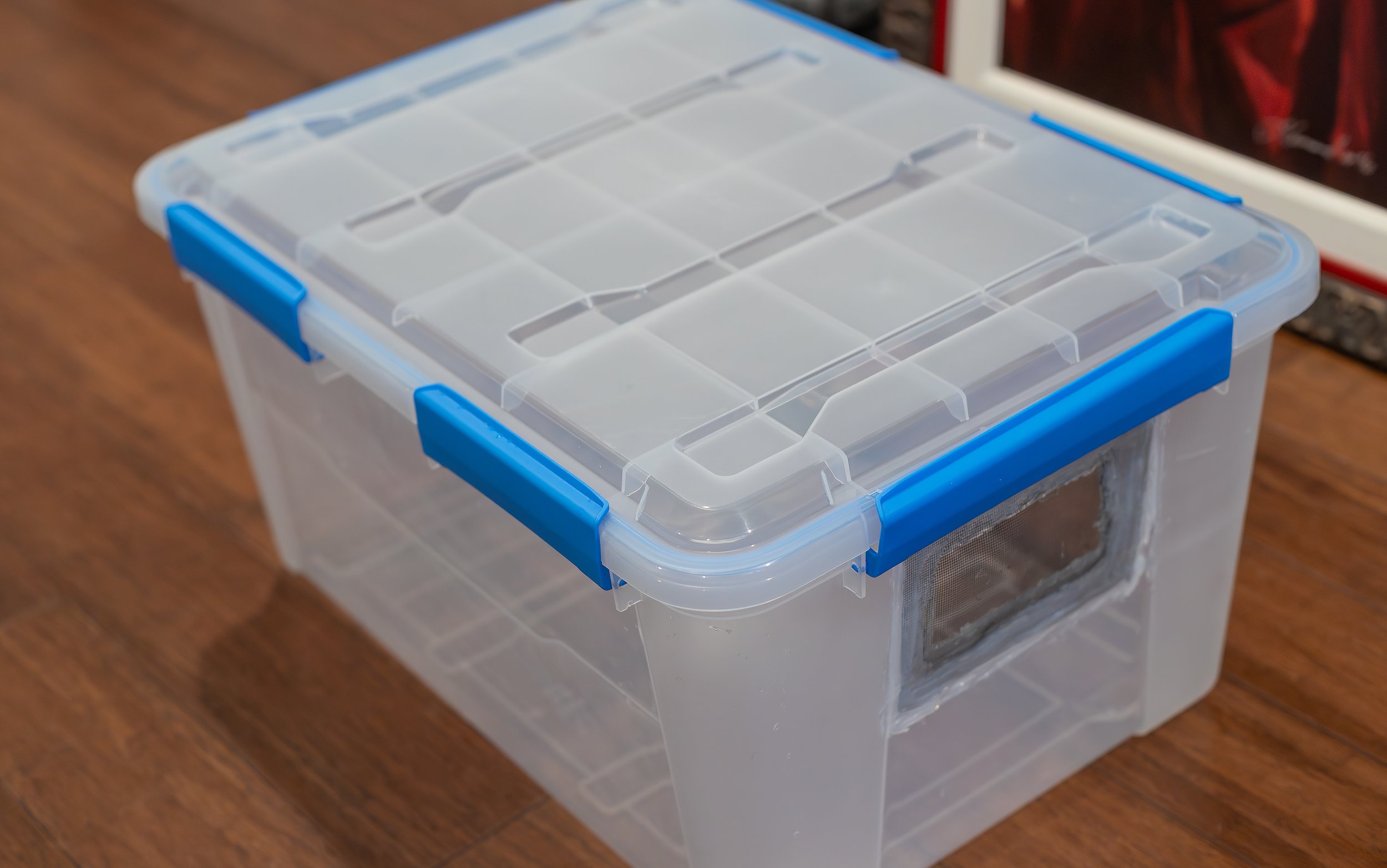
Let’s start with the quarantine enclosure. I like to use the Ezy Storage 50L/52.8 Quart Waterproof Clear Latch Tote IP-67 that measures 22.8x15x12.2”. They can be purchased at big-box stores like Home Depot and Target. This size fits neatly on my quarantine rack and is an adequate temporary size for most Dendrobatids. It has a gasket that seals it tightly to prevent fruit flies from escaping (as long as the mesh used has small holes).

Next, I cut a hole in the side of the enclosure for airflow/air exchange. You can use a drill with a hole saw bit or simply use a woodburning tool to cut a 6x4” hole. Another hole of about the same size can be cut on the opposite side if more airflow is desired. I cover the hole with a fine-meshed aluminum screen that is kept in place by using aquarium silicone or hot glue.
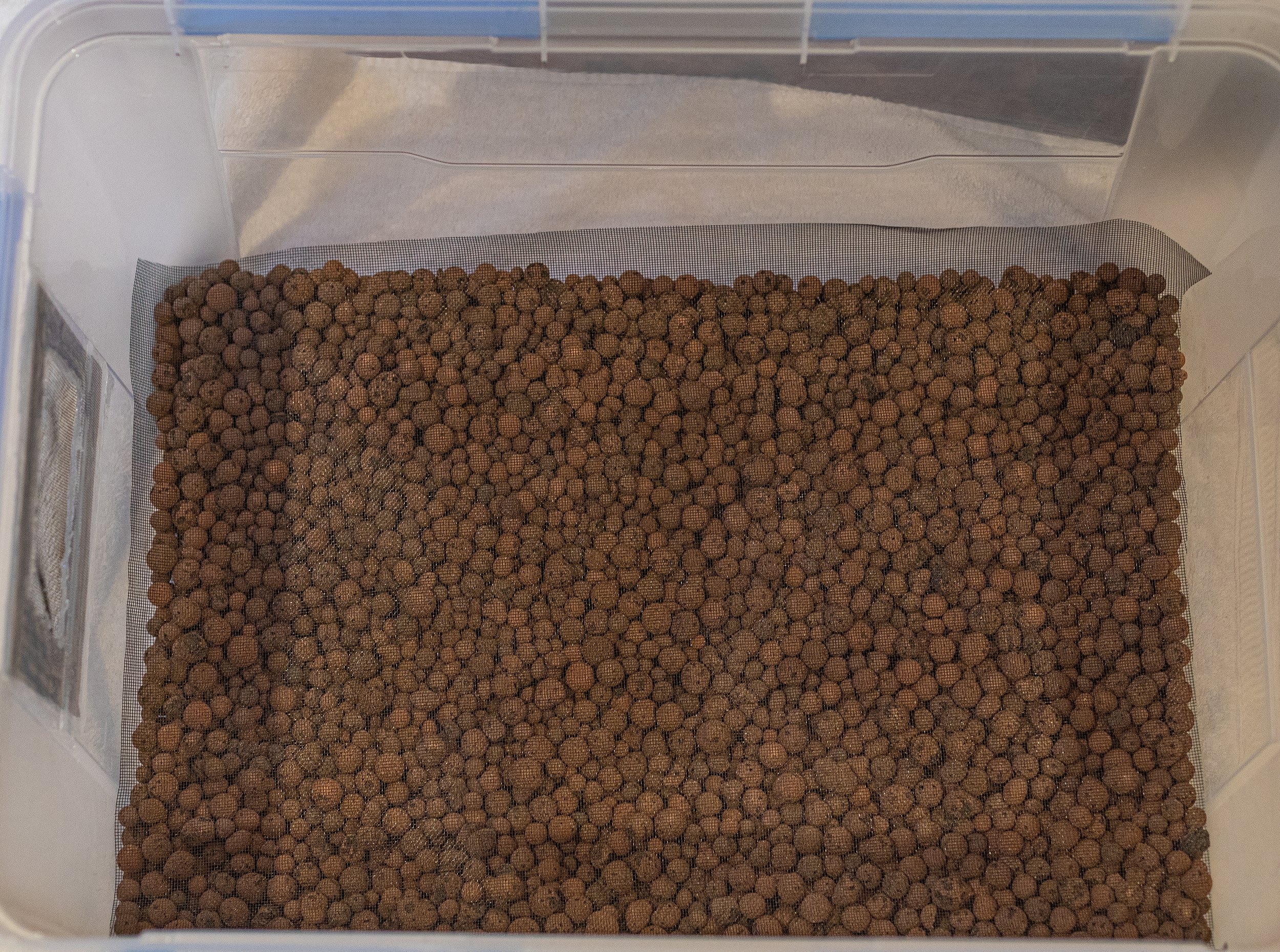
After the hole(s) is cut and covered, I place a drainage layer on the bottom of the enclosure with LECA or a foam filter pad. Since I like to keep some plants cuttings in the quarantine enclosures to help the frogs feel secure, I set up the enclosures similar to my breeder/display tanks. Next, I cover the LECA with a substrate barrier. You can omit this step if a foam filter pad is utilized.
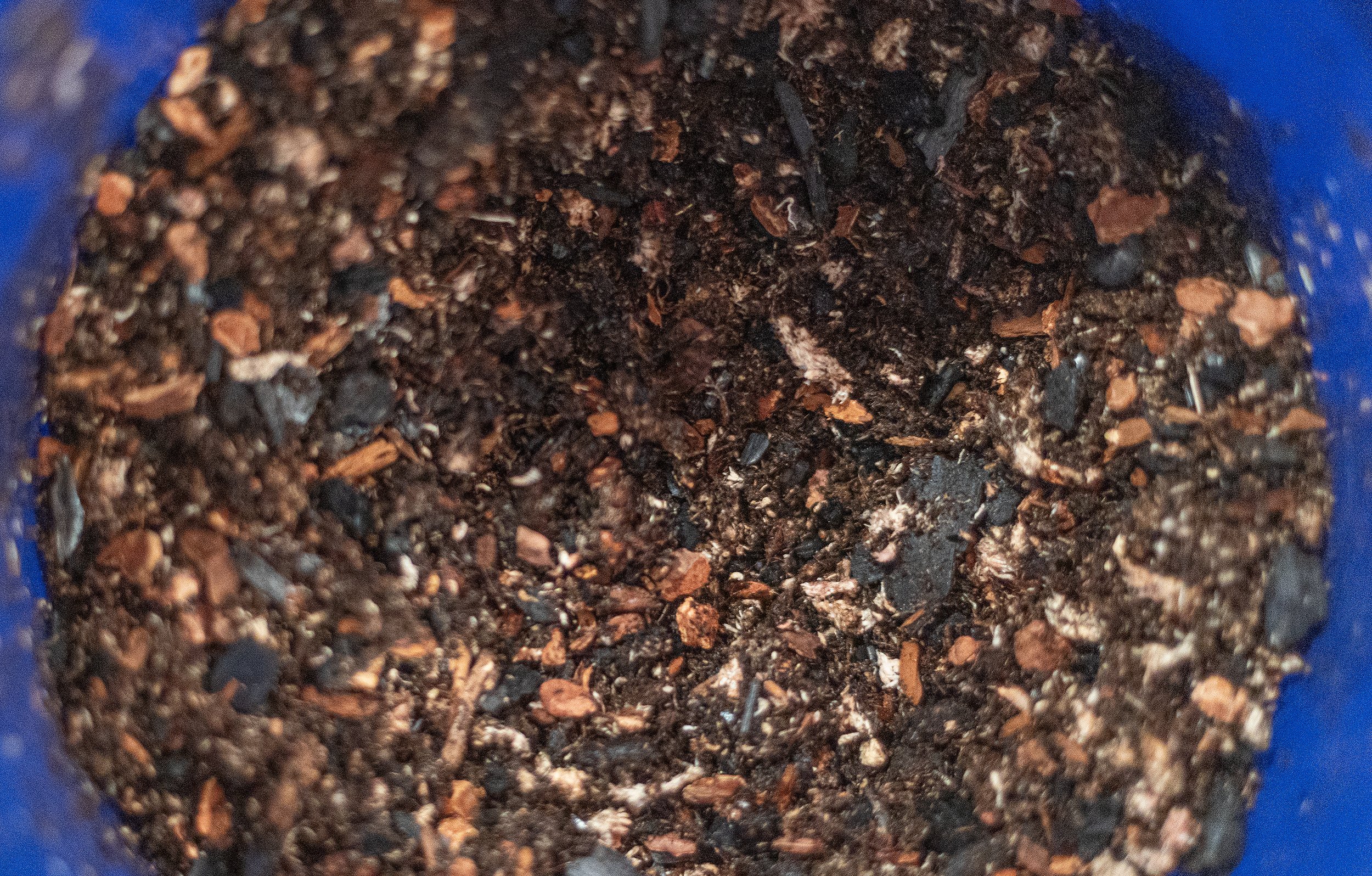
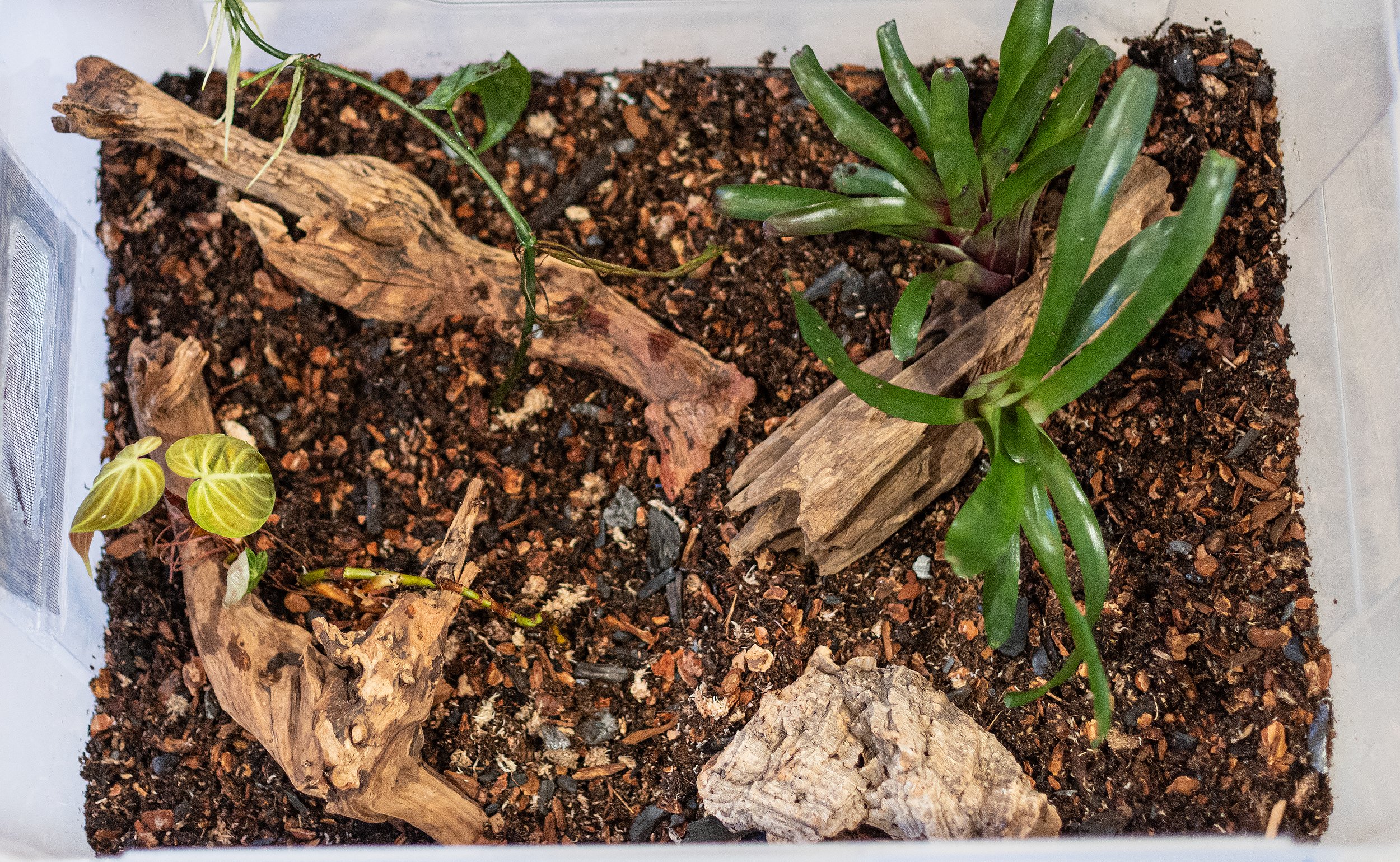
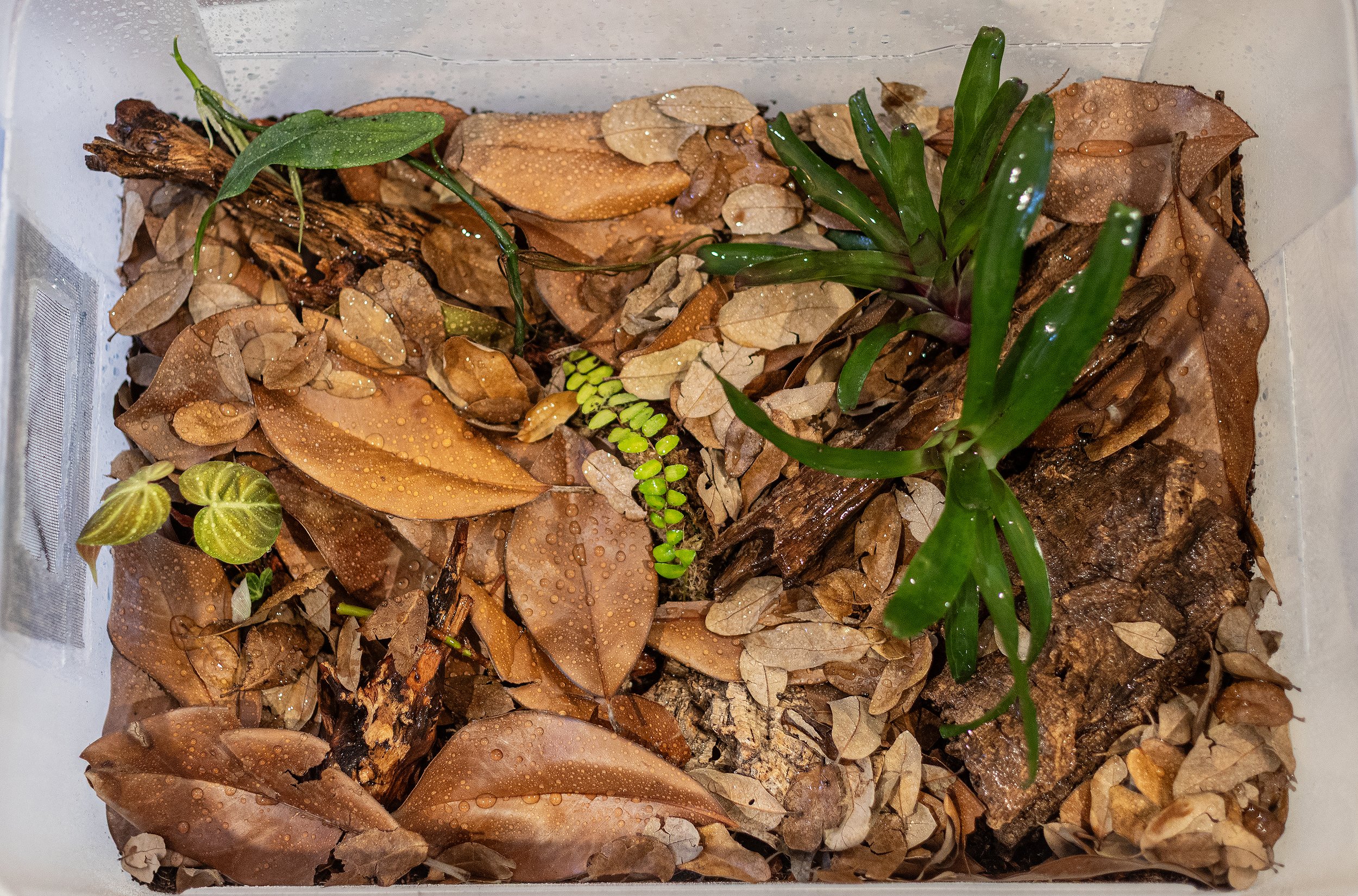
I mix up a batch of substate, which is 1 part peat moss, 1 part horticultural charcoal, 1-2 parts fir bark, and about 1 part milled sphagnum moss. I plant cuttings in the substrate, then cover the substrate with a healthy layer of magnolia and/or Texas live oak leaves. If you’re using the foam filter mat method, you will simply put the leaf litter on the foam filter mat. Give the enclosure a good misting, cover it, and put an LED on top on a 10 to 12-hour photoperiod. Feed and mist normally, watch the specimens closely, and get fecal samples as needed. If your specimens are doing well after several months, you can move them into your collection.
